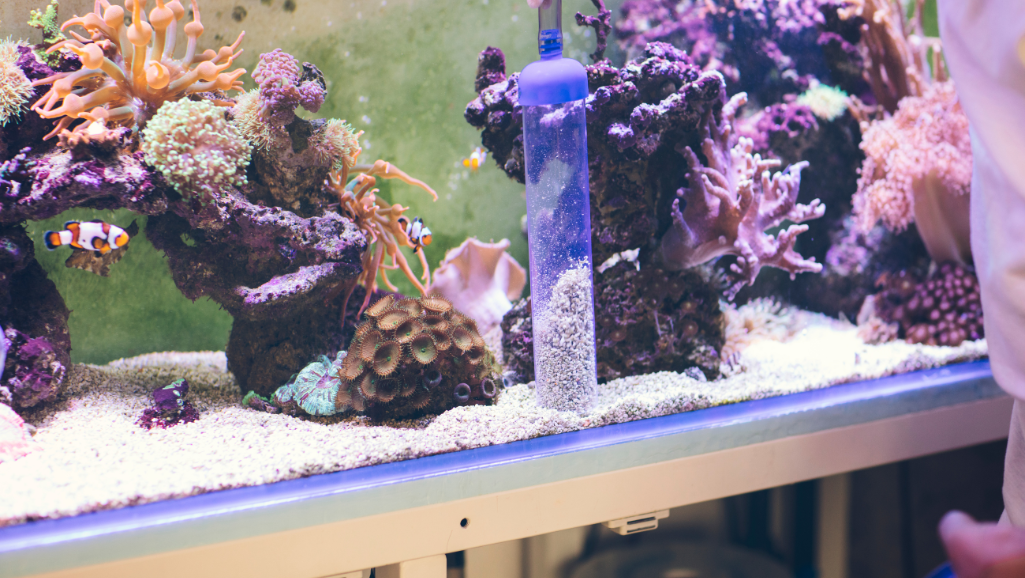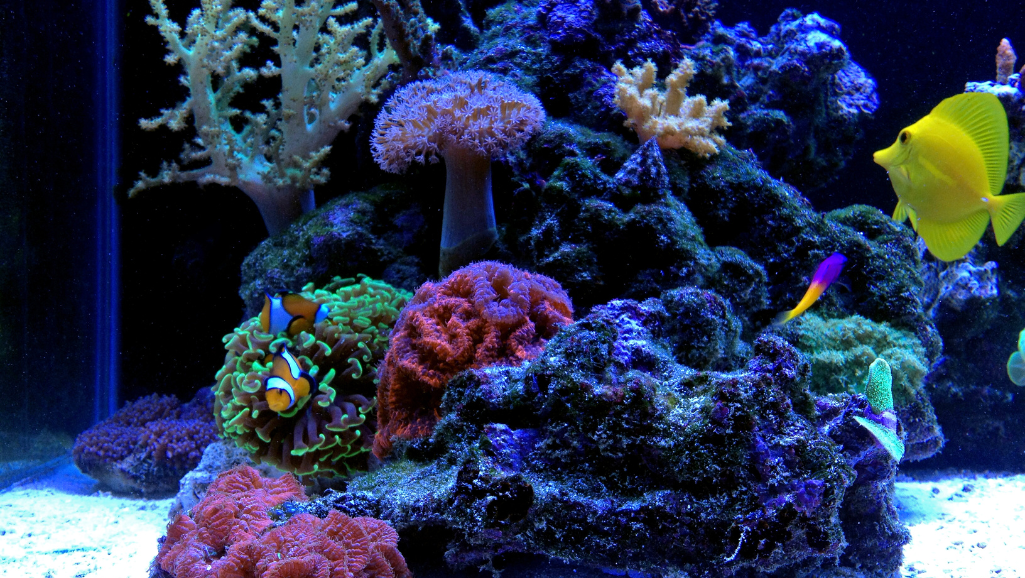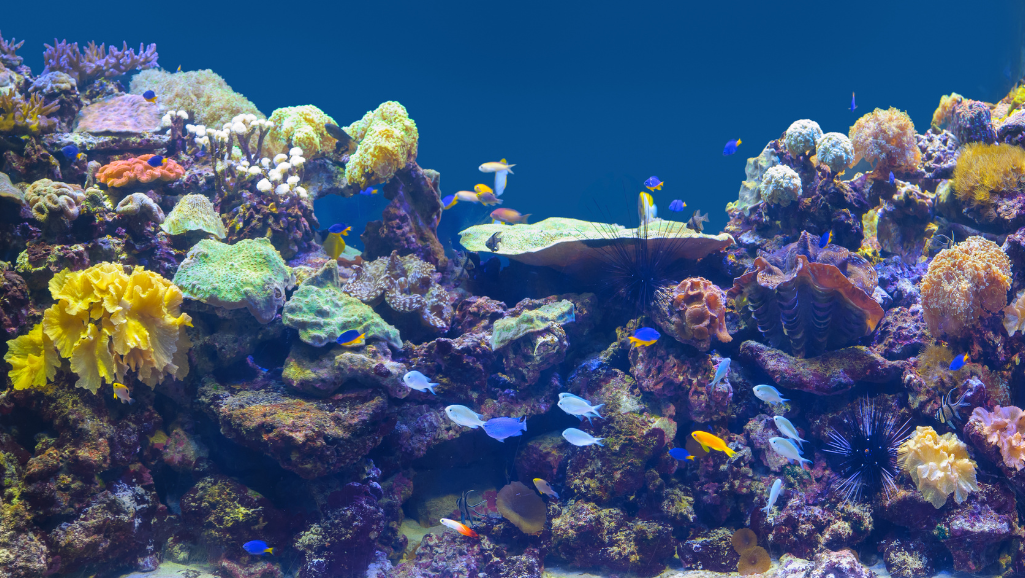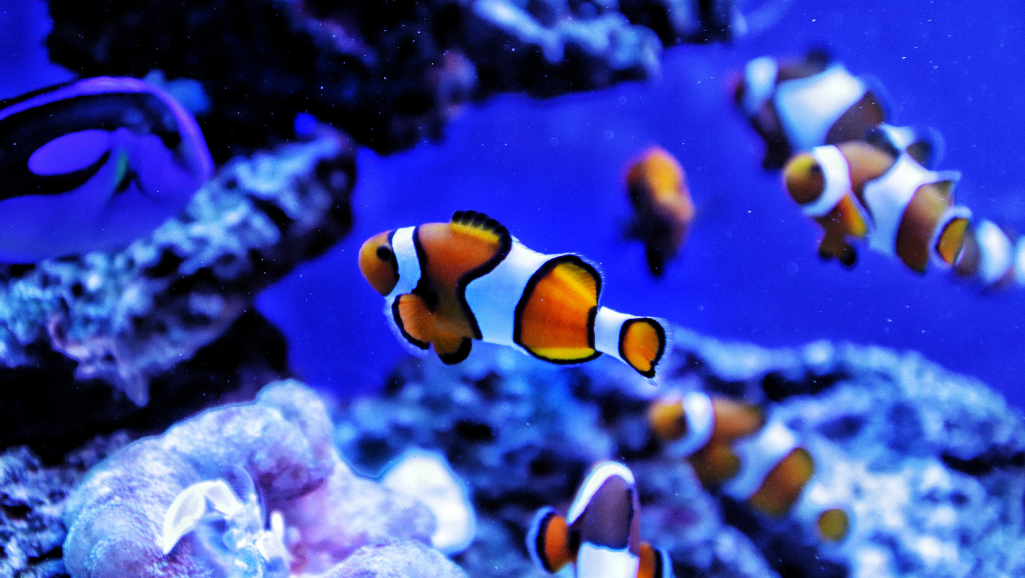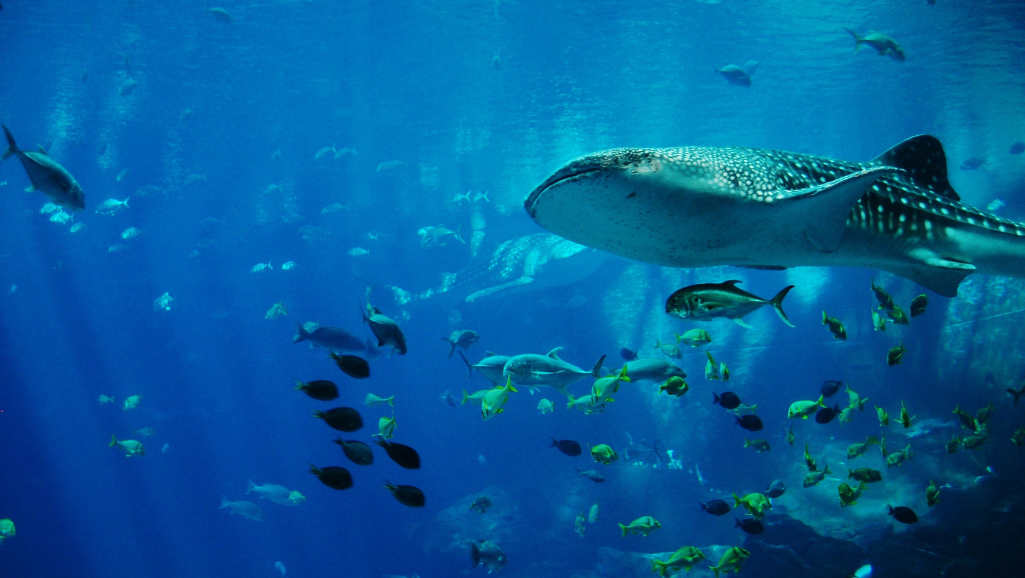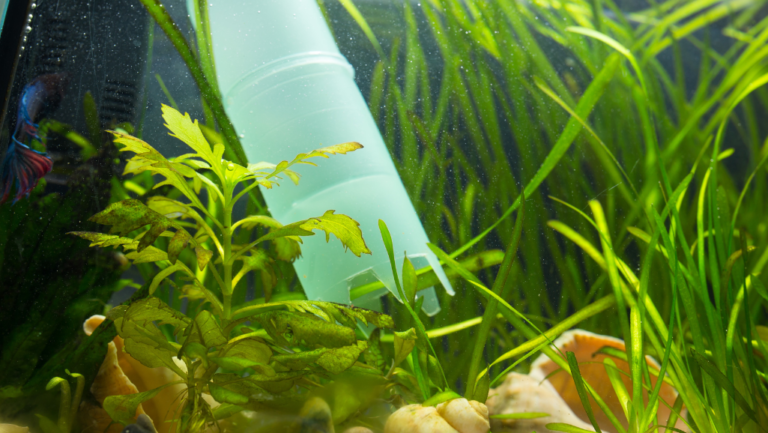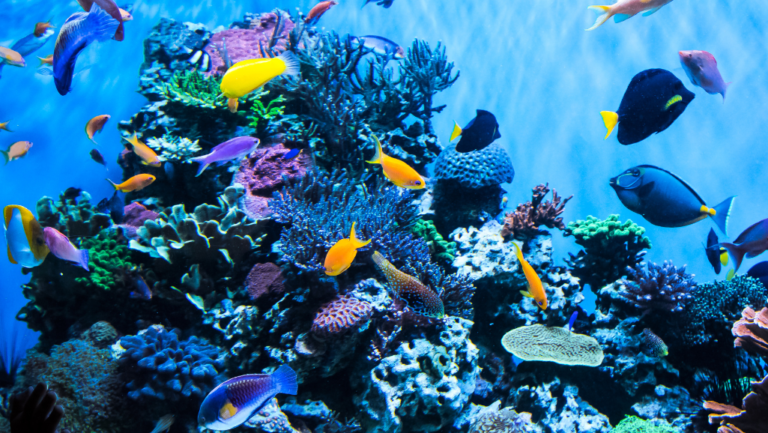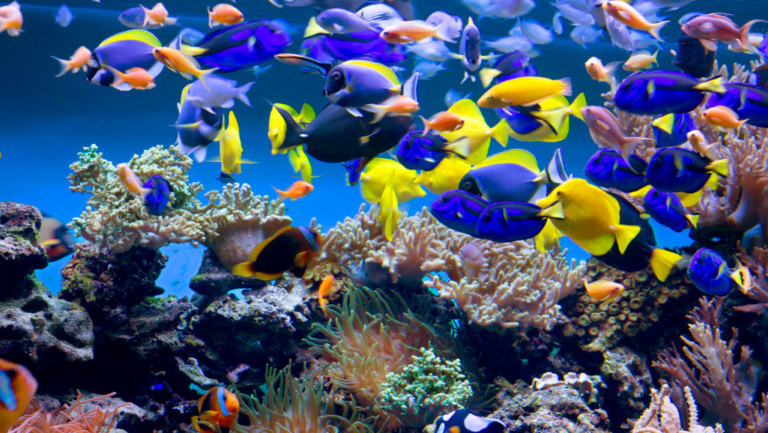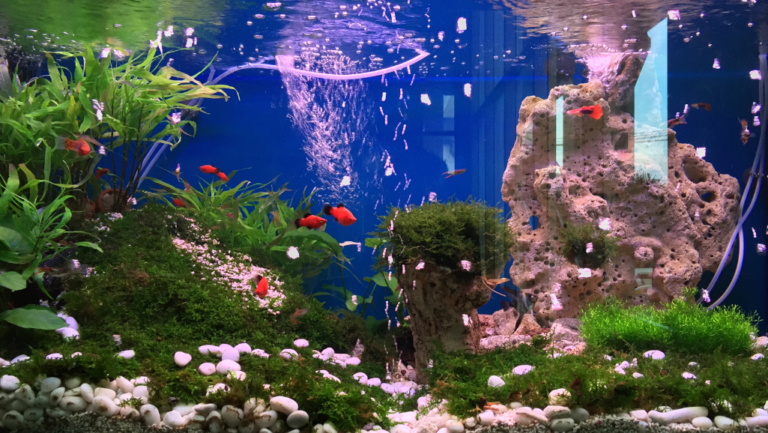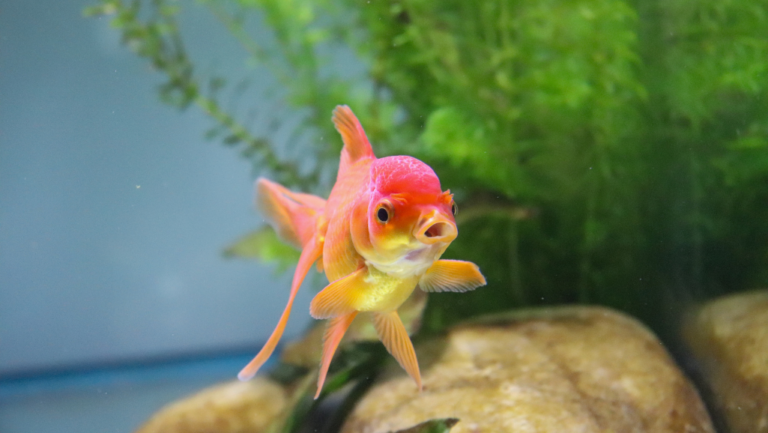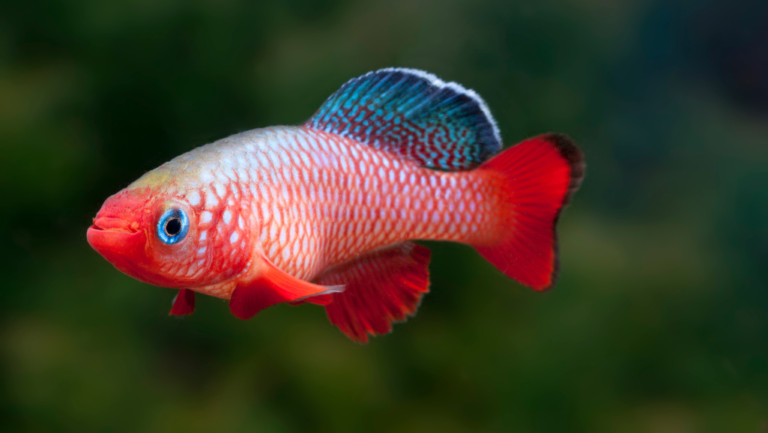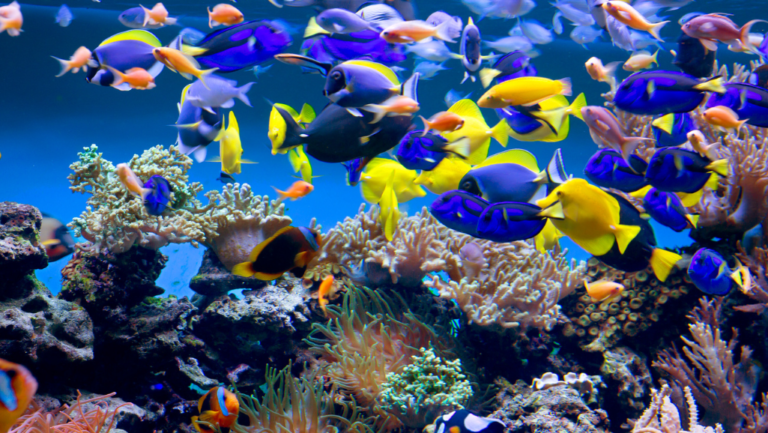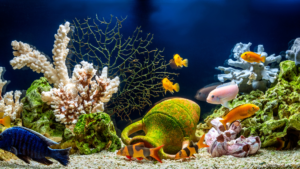Discover the power of reef tank lighting to create a thriving and visually stunning aquatic environment. Proper lighting is essential for the health and growth of corals. They rely on photosynthetic zooxanthellae for energy. The right spectrum and intensity of light can make all the difference in the appearance and vitality of your saltwater aquarium.
LED aquarium lighting has become increasingly popular. It’s energy efficient, customizable, and operates cool. You can tailor your lighting setup to the specific needs of your coral species. For LPS corals, 50-100 watts of LED lighting per 24″ square area is recommended. SPS-dominated tanks may require up to 200 watts for optimal growth.
When selecting your reef tank illumination, consider the absorption peaks of chlorophyll A. It’s found in corals at 440nm (violet light) and 675nm (red light). Aim for a color temperature between 8,000-10,000K to replicate the sun’s natural white light. Or explore the vibrant blues of 15,000-25,000K for a deep ocean aesthetic. Experiment with the Photosynthetically Active Radiation (PAR) intensity, which can range from 50 PAR in low light setups to an impressive 1200 PAR in bright tanks.
Key Takeaways
- Proper reef tank lighting is vital for coral health and growth
- LED aquarium lighting offers customizable color spectrums and energy efficiency
- Consider the absorption peaks of chlorophyll A when selecting light spectrum
- Aim for a color temperature between 8,000-10,000K for natural white light
- Experiment with PAR intensity to optimize coral growth and coloration
Understanding the Importance of Reef Tank Lighting
Lighting is key to a reef tank’s health and beauty. It lights up the colors of corals and fish. It also helps the delicate ecosystem in the tank. Creating a thriving marine environment means knowing how light affects coral growth and photosynthesis.
Today, over 90% of hobbyists choose LED lighting for reef tanks. LEDs offer a customizable spectrum for different corals. They also provide high levels of PAR, up to 1200 at the top and 200 at the bottom.
How Lighting Affects Coral Growth
Corals need a relationship with zooxanthellae, tiny algae for energy. The light spectrum, with violet and red, is key for photosynthesis. Each coral species has its own light needs:
- SPS corals need high PAR levels, 200-400 µmol/m²/s
- LPS corals do well with moderate PAR, 100-200 µmol/m²/s
- Soft corals prefer lower PAR, 50-150 µmol/m²/s
The Role of Photosynthesis in Marine Life
Photosynthesis lets zooxanthellae turn light into energy for corals. This is the heart of a healthy reef. Good lighting ensures zooxanthellae get the right light for photosynthesis, helping corals grow and stay colorful.
“Lighting is considered one of the most expensive aspects of maintaining a reef tank, but it is also one of the most important investments for the health and beauty of your aquatic ecosystem.”
Light Spectrum and Its Impact on Aquatic Health
Choosing the right marine aquarium light fixtures means looking at the light spectrum. A wide blue spectrum, from 390 to 470 nanometers, is best for corals. This range is not visible to humans, making PAR a better measure. Brands like Ecotech and Kessil offer customizable lighting. Brands like ReefBrite and Dymax are more affordable for soft corals and LPS corals.
Knowing the importance of lighting in reef tanks helps aquarists create a vibrant underwater world. By picking the right light spectrum for reef tanks, they can showcase the beauty and diversity of marine life.
Types of Reef Tank Lighting Systems
There are many reef-safe lighting systems for your tank. Each has its own benefits. The right high-intensity reef lighting is key for a healthy, vibrant tank.
LED lighting is the top choice, with 99.9% of owners preferring it. It’s energy-efficient, doesn’t heat up much, and is easy to control. You can pick from 50-watt, 90-watt, or 150-watt LEDs to fit your tank’s size and needs.
LED Lighting: A Modern Solution
LED lights are super controllable. You can adjust the light’s duration, intensity, and color for your corals. With the right setup, these lights can prevent coral health problems and make your tank look amazing.
LEDs offer many shimmer effects. You can choose from strong to no shimmer. This lets you set the mood of your tank just right.
T5 Fluorescent Fixtures for High Output
T5 fluorescent fixtures are another option. They give a good spectrum and color without shadows. But, they don’t have the shimmer effect that LEDs do.
They also don’t have timers. This makes it harder to schedule their use.
Metal Halide Lights: The Classic Choice
Metal halide lights are old-school but some like them. They have a natural spectrum and look good. They promote great coral growth and color.
But, they’re hot and use a lot of energy. This is more than LEDs.
When picking your lighting, think about your tank’s size, how much light it needs, and how to mount it. Mixing T5 and LED lights can be a good choice for some tanks. Remember, the cost and effectiveness of lighting depend on wattage. Choose based on your tank’s needs and your budget.
Choosing the Right Light Spectrum for Your Reef
Creating a thriving reef tank starts with the right light spectrum. The best spectrum depends on your corals and the look you want. Let’s explore light spectrums to find the perfect choice for your underwater world.
Blue vs. White Light: What’s Best?
In reef tank lighting, blue and white light are key. Blue light, from 75% to 100%, helps corals grow and glow. White light, from 0% to 10%, balances colors and keeps corals healthy. The right mix of blue and white light makes your reef tank stunning.
Full Spectrum Options for Vibrant Colors
For a colorful reef tank, full spectrum lighting is best. The 10,000K White spectrum, with 85% to 100% blue and 80% to 100% white, is great. The AquaBlue Plus spectrum, with 85% to 100% blue and 15% to 30% white, also promotes growth and color. These options make your corals shine, creating an amazing underwater scene.
“The beauty of a reef tank lies in the interplay of light and life. Choosing the right spectrum is like painting with nature’s palette, bringing out the true essence of your aquatic masterpiece.”
Understanding PAR (Photosynthetically Active Radiation)
When picking lighting, knowing PAR is key. PAR is the light used for photosynthesis, which powers coral growth. Soft corals need 50 to 150 PAR, LPS corals 50 to 150 PAR, and SPS corals 200 to 500 PAR. Actinic and daylight LED lighting provide the right PAR levels for your corals to thrive.
About 70-80% of corals need zooxanthellae for survival and growth. The right light spectrum and PAR levels support this relationship. This ensures your reef tank stays healthy and beautiful.
Setting Up Your Lighting Schedule
Creating the perfect reef tank lighting schedule is key for a healthy aquarium. It helps corals grow well and keeps your marine friends happy.
Importance of a Consistent Light Cycle
Consistency is vital for reef tank lighting. Corals and photosynthetic organisms need a steady light cycle. This helps them stay healthy and perform well.
Suggested Lighting Durations for Reef Tanks
Reef tanks need 8 to 12 hours of light daily. A gentle ramp up and down simulates sunrise and sunset. The blue spectrum, which is essential for corals, should start from 0 to 100% in 1-2 hours and stay on for 8-10 hours.
Here’s a recommended lighting schedule:
- Ramp up period (sunrise): 2 hours
- Main photo period (daylight): 8 hours
- Ramp down period (sunset): 2 hours
“Balancing light intensity is key for a community reef tank. A gradual approach and monitoring for optimal growth is essential.” – Reef Chasers
Using Timers for Convenience and Precision
Programmable reef tank lights and lighting timers for aquariums have changed how we manage lighting. These tools let you set exact on and off times and adjust light intensity and spectrum. Timers help keep your light cycle consistent without manual adjustments.
When setting up your lighting schedule, think about what your corals and invertebrates need. Some might need more or less light. Research and adjust to meet their needs. This will make your reef tank a stunning and thriving place.
Best Practices for Reef Tank Lighting
Creating the perfect lighting for your reef tank is key for your aquatic ecosystem’s health. By following best practices, your corals and marine life will thrive. Let’s look at some strategies for ideal reef tank lighting.
Avoiding Light Shock in Corals
Preventing light shock in corals is vital. Corals don’t like sudden light changes, which can stress and harm them. To avoid this, make lighting changes slowly.
When starting a new tank or adding new corals, begin with low light. Then, slowly increase it. This lets corals adjust to their new home.
Adjusting Light Intensity Over Time
As corals grow, their light needs change. It’s important to watch their growth and adjust light levels. Gradually increasing light ensures corals get what they need.
Remember, different corals need different lights. Research and adjust your lighting for your corals’ specific needs.
“Proper lighting is the key to unlocking the vibrant colors and stunning growth of corals in a reef tank.”
Regular Maintenance of Light Fixtures
Regular maintenance keeps light output high and prevents algae. Clean your lighting fixtures often. Replace bulbs or LED modules as needed to keep light consistent.
By keeping your lighting system in good shape, you create the best environment for your reef tank. This will make your tank a thriving, stunning aquatic paradise for years.
Innovations in Reef Tank Lighting Technology
The world of reef aquariums is always changing. New lighting technologies help corals grow and keep tanks healthy. Let’s look at some exciting new developments in reef tank lighting.
Smart Lighting Solutions for Aquarists
Smart lighting for reef tanks has changed how we care for our tanks. Modern LED systems can be controlled from phones or tablets. They give a full spectrum of light, perfect for coral health.
Companies like AI Hydra and Ecotech Radion are leading this change. They use advanced LED technology for customizable and efficient lighting. This new tech is better for corals and uses less energy than old bulbs.
Remote Monitoring and Adjustments
Automated systems like the Neptune Systems Apex Controller are key for reef tank care. They track water conditions in real-time. This helps keep the tank stable for corals and fish.
These systems also help with other tank tasks, like dosing and wave makers. They make it easy to create a smart aquarium. This setup helps corals grow and keeps the tank healthy.
UV Filters: Enhancing Water Quality
UV filters are great for clear water and fighting off bad bacteria. They use UV light to kill algae and bacteria. This keeps corals and fish healthy.
“The combination of smart lighting, remote monitoring, and UV filtration has transformed the way we approach reef tank maintenance. These innovations not only make our lives easier but also contribute to the long-term success and beauty of our aquatic ecosystems.”
The reef aquarium hobby is always getting better. We’ll see more advancements in lighting soon. These changes will lead to healthier, more colorful reef tanks, full of marine life.
How to Position Lights Effectively
Getting the right spot for reef tank lights is key to a healthy and beautiful aquarium. The place and height of your lights greatly affect your corals and marine life. Knowing how to position your lights helps you get even light and show off your corals.
Height and Distance from Water Surface
When setting up your reef tank lights, think about how high and far they are from the water. A study tested 50 lighting setups on a 24″ cube tank. It found that lights should be between 6″ to 20″ above the water for best results. Too close, and you get hot spots and wasted light. Too far, and your corals don’t get enough light.
Creating a Balanced Light Distribution
It’s vital to have even light for your corals to thrive. The study aimed for a light distribution with no more than 30% difference in light intensity. This ensures all parts of your tank get enough light. Aim for 250 PAR across the tank, with at least 150 PAR at the bottom and up to 350 PAR near the top.
Spotlighting Corals for Aesthetics
Lighting can also make your tank look amazing. By placing LED lights just right, you can make certain corals pop. Some corals look better under more intense light, so placing them near the top can be stunning. But, remember to adjust for each coral’s needs to avoid damage.
Getting your reef tank’s lighting just right takes time and effort. Keep watching your corals and adjust as needed. With patience and the right tweaks, you can create a vibrant underwater world that showcases marine life’s beauty.
Common Mistakes in Reef Tank Lighting
Lighting is key to a healthy reef tank. It affects the health and growth of your fish and corals. Many beginners make mistakes that harm their tank.
One big mistake is overlighting. It can cause corals to lose their color and even die. Too much light makes them expel their algae. On the flip side, not enough light makes corals grow poorly and look dull.
Overlighting Issues and Consequences
Some people light their tanks too much because they don’t know what their corals need. For example, some corals do best in light with PAR values between 200 and 350. More light can make colors pop but also stress corals, leading to bleaching.
Underlighting Concerns for Coral Health
Underlighting is just as bad. It stops corals from growing and looking their best. Without enough light, they can’t make the energy they need. This leads to stunted growth, dull colors, and more disease.
Not Considering Tank Dimensions
Another mistake is not picking lights that fit your tank size. You should space LED lights 12-18 inches apart for even lighting. Ignoring your tank’s size can cause uneven light and harm your corals.
To avoid these mistakes, learn what your corals need and choose the right lights. T5 fixtures are good for SPS corals. By understanding your tank’s needs and using quality lights, you can create a vibrant reef home for marine life.
Using Colored Lighting for Aesthetics
Colored lighting can turn your reef tank into a stunning underwater world. Using different filters and night lights can make your corals look even more beautiful. It creates an amazing aquatic experience.
Corals and fish in reef tanks show off amazing colors, from bright neon greens to deep magentas. The lighting you pick greatly changes how these colors look. Fluorescent proteins in corals absorb blue-violet light and emit lower energy wavelengths like green, red, yellow, or orange, creating a captivating glowing effect.
Enhancing Coral Colors with Different Filters
To make your corals pop, a balanced light spectrum is essential. It should have peaks in violet, blue, and indigo wavelengths. Changing these spectrum peaks can really make your corals’ colors stand out under different lights. Most aquarium lights also have cool or warm white LEDs to show off the tank’s color pigments.
Every tank is different, and achieving the best coloration involves providing a customized light spectrum based on the corals present.
The Appeal of Night Lights in Reef Tanks
Night lights with dim blue or moonlight settings can make your reef tank look amazing. They mimic natural lunar cycles. These lights let you enjoy your aquarium’s beauty in the evening without disturbing your marine life.
Creating an Immersive Aquatic Experience
By choosing and adjusting your colored lighting for reef tanks, you can make an immersive aquatic experience. Trying out different filters and night lights lets you show off your corals and fish. It turns your aquarium into a living work of art.
Budgeting for Quality Reef Tank Lighting
When setting up your reef tank, lighting is key. It’s tempting to choose the cheapest options. But, quality lighting is vital for your tank’s health and beauty. Let’s look at how to budget for lighting without losing performance.
Cost vs. Benefit Analysis of Different Systems
Before buying, compare the costs and benefits of different lights. LEDs, for instance, cost more upfront than old-school fluorescent tubes. Yet, they save energy, last longer, and adjust to your tank’s needs. Their long-term savings and durability make them worth it.
Finding Affordable Options Without Compromising Quality
Finding the right balance between price and quality is key. Look for brands that offer good deals without cutting corners. Choose lights with adjustable settings and durable builds. Reading what other aquarists say can help you find reliable options.
“Investing in a quality lighting system is not just about aesthetics; it’s about creating a thriving environment for your reef inhabitants.”
Long-Term Savings with Energy-Efficient Choices
Choosing energy-efficient lights like LEDs can save you money over time. They use less power than old lights, cutting down on bills and carbon emissions. Plus, LEDs last longer, saving you money on replacements.
Lighting is a vital part of your reef tank. By budgeting for reef tank lighting smartly, you can have a beautiful and healthy tank without spending too much. Go for quality, energy-saving reef lights, and enjoy your underwater world for years.
Environmental Considerations for Reef Tank Lighting
As reef aquarium fans, we must think about our lighting’s environmental effect. Choosing eco-friendly options helps us reduce our carbon footprint. This way, we keep our tanks healthy for our underwater friends.
Energy Consumption and Efficiency Ratings
When picking lights for your tank, look at their energy use. LED lights are great because they use less power and let you adjust the color. They use up to 80% less energy than old lights, making them good for our planet.
Sustainable Practices in Lighting Choices
Being green with your tank’s lights is more than just picking efficient ones. Think about how long your bulbs last and recycle them when they’re done. Many companies have recycling for old bulbs, keeping bad stuff out of landfills.
“By making small changes in our lighting choices, we can collectively reduce the environmental impact of the reef aquarium hobby.” – Marine Conservation Society
Impact on Local Ecosystems and Preservation
It’s key for us to think about how our lights affect local reefs. Choose systems that mimic the sun’s natural cycle to keep corals healthy. Supporting local coral farms and avoiding wild corals helps protect reefs for the future.
Every choice we make towards greener reef tank lighting counts. By focusing on energy savings, green practices, and caring for marine life, we can enjoy our tanks. We also help make the world a bit greener.
Expert Recommendations for Your Reef Tank
Starting a reef tank journey? Getting expert advice is key. Top reef tank lighting brands like Kessil, AI, and EcoTech Marine offer quality products. They have a wide range of lighting options to match your tank’s needs.
Top Brands and Products in the Market
Exploring reef tank lighting, you’ll find many top products. The EcoTech Marine Radion XR15, Aqua Illumination Hydra TwentySix, and Kessil A360X are favorites. They balance light intensity and spread, perfect for all coral types.
Community Insights and Reviews
Looking at reef aquarium lighting product reviews online is helpful. Join forums and social media groups to learn from others. You’ll get tips on PAR values, tank sizes, and coral types.
Consulting with Reef Tank Professionals
For custom lighting advice, talk to reef tank experts. They know how to light your tank right. They consider your tank’s size, corals, and look you want. Their advice can save you time and ensure your reef is well-lit.

